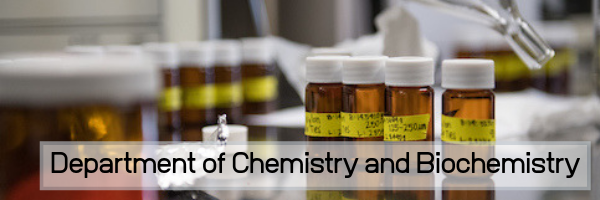
Faculty and Student Publications
Document Type
Article
Publication Date
3-1-2022
Abstract
Dicyano-functionalized benzene and naphthalene anion derivatives exhibit a relatively rich population of electronically excited states in stark contrast to many assumptions regarding the photophysics of anions in general. The present work has quantum chemically analyzed the potential electronically excited states of closed-shell anions created by replacing hydrogen atoms with valence-bound lone pairs in benzene and naphthalene difunctionalized with combinations of-CN and-C2H. Dicyanobenzene anion derivatives can exhibit dipole-bound excited states as long as the cyano groups are not in para position to one another. This also extends to cyanoethynylbenzene anions as well as deprotonated dicyano-and cyanoethynylnaphthalene anion derivatives. Diethynyl functionalization is less consistent. While large dipole moments are created in some cases for deprotonation on the-C2H group itself, the presence of electronically excited states beyond those that are dipole-bound is less consistent. Beyond these general trends, 2-dicyanonaphthalene-34 gives strong indication for exhibiting a quadrupole-bound excited state, and the 1-cyanoethynylnaphthalene-29 and-36 anion derivatives are shown to possess as many as two valence-bound excited states and one dipole-bound excited state. These photophysical properties may have an influence on regions where polycyclic aromatic hydrocarbons are known to exist such as in various astrochemical environments or even in combustion flames.
Relational Format
journal article
Recommended Citation
Strauss, M. E., Santaloci, T. J., & Fortenberry, R. C. (2022). Valence-, dipole- and quadropole-bound electronically excited states of closed-shell anions formed by deprotonation of cyano- and ethynyl-disubstituted polycyclic aromatic hydrocarbons. Chemistry, 4(1), 42–56. https://doi.org/10.3390/chemistry4010004
DOI
10.3390/chemistry4010004
Accessibility Status
Searchable text

